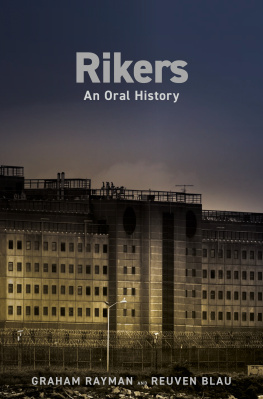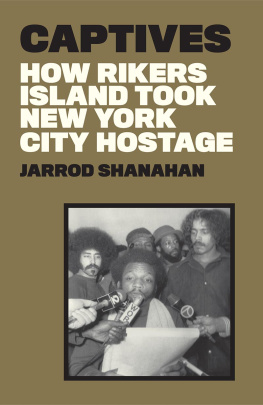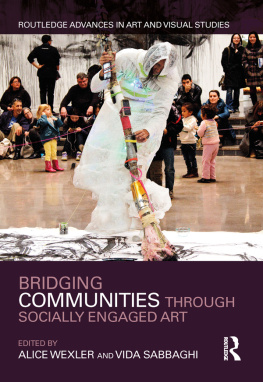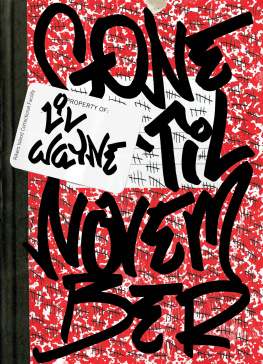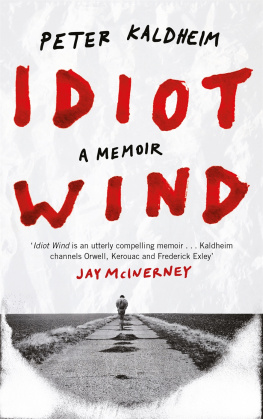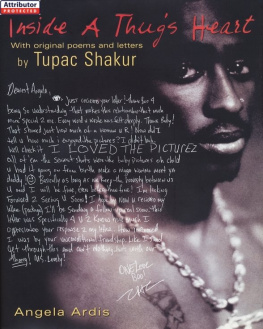One of the many challenges new authors face is finding an agent to sell their work. I was lucky: Noah Lukeman, agent nonpareil, found me. Noah even came to Rikers Island to meet my inmate-students and speak to them about the world of publishing.
I thank my editor at St. Martins Press, Michael Denneny, for his steadfast encouragement and excellent judgment, and my previous editor, Dana Albarella, for her belief in this book. Special thanks as well to assistant editor Christina Prestia, a consummate professional who kept me focused and the project on track.
I acknowledge the many individuals at the New York City Department of Correction who have supported Fresh Start since its inception. The inmate-graduates and I wouldnt be where we are today without the benevolence of former commissioners Michael Jacobson and Bernard Kerik; Deputy Commissioner of Strategic Planning and Programs Roger Jefferies and his predecessor, Fred Patrick, all long-standing friends of Fresh Start. Correction Officers Dwight Gray and Rachel Sellers oversee Fresh Start on Rikers; their warmth and professionalism are the glue of the program. Special thanks, too, to Correction Officers Delbert Beasley, Jerome Garlick, Glenn Miller, and Henry Rohr for always treating our students with fairness and compassion.
At the Austin H. MacCormick high school on Rikers Island, I thank Deputy Superintendent Timothy Lisante for being the best role model a correctional educator-in-training could have, and Frank Dody, principal, for continuing the tradition. And I speak for hundreds of students in thanking instructors Helen Clerici and Martine Scannavino for their vast contributions over the years.
I owe a debt of gratitude to author Jonathan Kozol, who inspired and helped me from the start. I thank authors Steven Donziger and Ted Conover for their encouragement and expert advice. I am grateful to Alessandra Alecci, Janine de Vogelare Baron, Carol Ferry, David Hammer, Kenneth Johnson, and Peter Schmidt for their insightful and speedy review of the manuscript.
Several professors at John Jay College of Criminal Justice have enriched my thinking through their bold ethnographic work and the generous time they extended to me. In particular, I thank Barry Spunt, an early catalyst in my academic career, as well as Charles Bahn, David Brotherton, Todd Clear, Rick Curtis, Steve Sifaneck, and Richard Wolf.
There are many individuals, too many to list, whom I thank for the opportunities they have given me and their friendship over the years: Rachel Amols, Carlos Batista, Ralph and Peggy Brown, Mickeni Caldwell, John Chiarkas, Don Colbert, Hilton Cooper, Chris Cozzone, Laura Davidson, Nancy Duggan, Eddie Ellis, Malik Folsom, Gennifer Furst, Jason Gerald, Frank Guzman, Clay Hiles, Leonard Hughes, James Jiler, Kenneth Johnson, Lynwood Jones, Alice Layton, Donald Matusik, Peter Meacher, Joseph Messineo, Anthony Papa, Fred Patrick, Elizabeth Payamps, Juan Pietri, Patricia Ritchings, Eric Rosenfeld, Marianna Shturman, Adolf Smith, Dwayne Speight, Richard Stratton, Herbert Sturz, Earl Swindel, John and Margaret Wareham, and Ilene Wittner.
My highest appreciation goes to my mentors, Robert Gangi, executive director of the Correctional Association of New York, and Elizabeth Gaynes, executive director of the Osborne Association, who have influenced my life profoundly.
Finally, I want to thank my family: my grandmother, Collette Ramsey-Baker, for lighting the spark of public service in me through her work as founder of the Deafness Research Foundation; my sister, Carin Wynn-Dupuis, for her special friendship and insightful advice, whether book- or life-related; my brother, Brooks Wynn, for keeping me laughing and showing me that change is possible; my brother-in-law, Richard Dupuis, for his generosity to me and my students; and, most of all, my parents, Charles and Collette Wynn, for giving me roots and giving me wings, and for teaching me the value of an open heart and mind.
One of the most sobering and insightful updates on criminal justice in America can be found in a 1999 report by the National Commission on the Causes and Prevention of Violence. The report offers a retrospective analysis thirty years after President Lyndon B. Johnson impaneled the commission in the wake of the assassinations of Senator Robert F. Kennedy and Martin Luther King, Jr. Since the late 1960s, the report reveals, violent crime is up 40 percent in big cities, the number of people possessing firearms is up 120 percent, and prison construction has increased sevenfold.
How do we stand on justice today? ask the authors. Almost a quarter of all children five and under live in poverty. America is the most unequal country in the industrialized world in terms of income and wealth. The digital divide is accelerating the gulf between our haves and have nots. The average CEO makes 419 times as much as the average worker, and this ratio has greatly increased over the last three decades. The states spend more on prison building than on higher education, whereas the opposite was true at the time of the Commission.
The good news, the authors note, is that America today has both the knowledge and the resources to launch an effective attack on the violent crime that still afflicts us. The report cites a number of programs as good public-policy approaches to crime prevention. Equally important, the authors provide a blueprint for financing a national urban and criminal justice policy and the ways in which concerned citizens and organizations can work to create the political will necessary to effect meaningful and lasting reform. The study was conducted by the Milton S. Eisenhower Foundation, a nonprofit research group located in Washington, D.C.
Another excellent primer for laypeople and professionals alike is Elliott Curries Crime and Punishment in America. A society that incarcerates such a vast and rapidly growing part of its population, but still suffers the worst violent crime in the industrial world, is a society in trouble, the author writes. Curries lucid and readable book cuts through reams of statistics and studies to show why current approaches to Americas most stubborn social crisis have not worked and, more important, what will.
The Real War on Crime, a report by the National Criminal Justice Commission, is a far-sighted account of the forces behind current criminal-justice policy. Published in 1996 and written in the same jargon-free style as Curries Crime and Punishment in America, The Real War on Crime covers the gamut of contemporary criminal justice issues, from the prison industrial complex to the myths and realities of crime and violence in the United States.
Specific to Rikers Island, the New York City Department of Correction offers a detail-rich Web site covering Rikers history, inmate characteristics, charts, statistics, organizational briefs, and program highlights ( http://www.ci.nyc.ny.us ).
For general criminal-justice information, an excellent place to begin is the home page of the Justice Information Center, a service of the National Criminal Justice Reference Service ( http://www.ncjrs.org ). NCJRS is one of the most extensive sources of information on crime statistics, crime prevention, and research and evaluation in the area of crime control.




